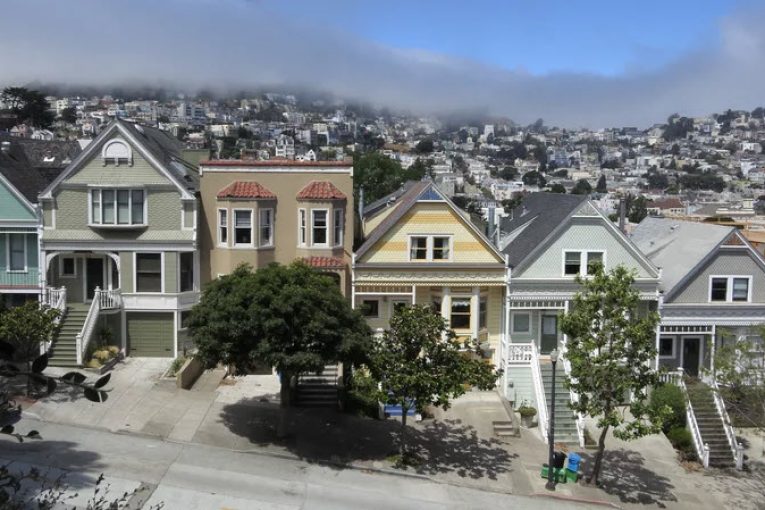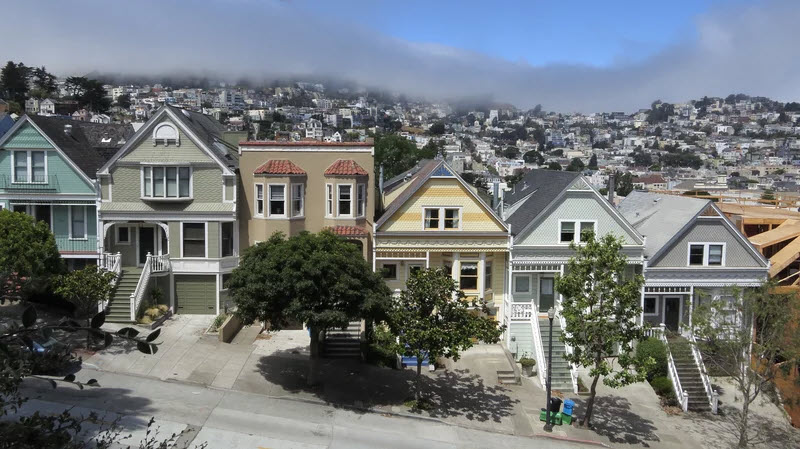

By David M. Greenwald
Executive Editor
In many circles, just about everyone has been talking about the NY Times discussion between Ezra Klein and Jerusalem Demsas on housing and infrastructure. (Podcast here).
The left deserves a lot of blame here and if you are looking for a defense of left policies in cities, you will not get it from me.
As anyone has who has read the Vanguard knows, there is a clear divide on the left between homeowners and non-homeowners. There is a divide between progressivism and what you may call limousine liberal, or probably better described as upper middle class liberalism.
Some of these boundary lines are not as clear as we would like to make them. For example, establishment versus non-establishment may not accurately divide the line here.
There is some interesting stuff, but I also think some historical errors.
“There is a stereotype of the cleavage in American politics, which is that Democrats want to use the government to do big things, and Republicans don’t, and that is the fight,” Klein says but he  also points out “there’s a bit of a divided Democrat soul here.”
also points out “there’s a bit of a divided Democrat soul here.”
But then he notes “that was… partially in response to these periods in the ‘50s and ‘60s when you had Robert Moses cutting up minority communities with highways in New York.”
(Of course anyone who has read Robert Caro’s epic work, The Power Broker, knows that Moses was not only a Republican, but an elitist and rather conservative one at that. But I digress).
Jerusalem Demsas rightly points out that “there’s very little reckoning of the fact that there are large swaths of the community that makes up progressives that have also engaged in regulatory capture. And that things like homeownership, and things like blocking housing, and transit, and infrastructure in their communities is something that’s not being done by developers or some kind of nefarious other force.”
As UC Davis law professor Chris Elmendorf tweeted this weekend, “I wish they’d paid more attention to organized groups that oppose prohousing reforms at state level and in liberal cities, and the rhetoric in which they couch their opposition.”
As anyone who has read my work on this subject, that’s a big problem and it’s not neatly pigeonholed into a progressive-conservative dichotomy or even a progressive-liberal one.
Demsas continues, saying that “participatory democracy does not actually solve this problem.”
In fact, you can argue the opposite.
“You have structural issues with the fact that people who are willing to engage in these kinds of local politics are systematically older, systematically whiter, and systematically they’re more likely to be homeowners and have a preference towards stability rather than growth and change,” he writes.
As Elmendorf: “It’s become an item of faith among significant segments of the Left that new housing is bad for poor people unless it’s deed-restricted affordable — despite mountains of evidence to the contrary.”
Klein points out, if you look at San Francisco—one of the most liberal and at the same time least affordable cities, “the people who are organizing to stop this stuff.
“I don’t want to say it’s not rational behavior, because it is,” Klein continued. “I mean, you can be doing amazingly well and still want your house to go up in value. You can be doing amazingly well and not want your life to be inconvenienced. I’m not even saying that it is — on a local level — cruel behavior.”
He goes further, pointing out that “even if I give you all kinds of economic data showing you it’d be better for people if you made it more dense, they don’t want that to happen. And that’s actually a legitimate human interest.”
Jerusalem Demsas responds, saying “certainly it’s not the case that all of NIMBYism or all of opposition to housing development, or transit development, or helping progressive policy at local level can be explained by these incentives. But there’s clearly racism and classism. You can hear it when you go to public meetings. You can hear the way people talk about it.”
He adds that “all these people can also have classist views, and of course have xenophobic views, or whatever it is. But it is clearly the case that the tenor of these conversations is so heightened because there are real financial stakes for a lot of people.”
He notes: “[I]t’s different for someone who is a wealthy tech worker in San Francisco who bought a house in 1970, and has locked in a really low property tax rate that’s just saving them tons of money.”
On the other hand, “that doesn’t explain what’s happening at every other level, where homeowners are also opposing these policies, despite being essentially identical to the types of people who benefit from them.”
I think this debate sets up the next great battle in land use in California.
As Elmendorf points out: “The next front for such politics is reform of single-family zoning. Witness debate in SF about how many units in resulting 4-plex must be deed-restricted affordable in order for a SFH conversion to be allowed.”
Bottom line then, I think this conversation shows that it is really self-interest rather than ideology driving this debate. I think we saw this very clearly in Davis a month ago when the dividing line over the Housing Element was clearly defined first by age and second by homeownership.
Those who are homeowners bought their houses in the 70s and 80s and clearly see the world very differently then those who are not homeowners.
So what we are really seeing is not necessarily ideological. Or it is ideological, it is what Ezra Klein referred to as “symbolically liberal, operationally conservative.”
In February he wrote: “There is an old finding in political science that Americans are ‘symbolically conservative’ but ‘operationally liberal.’ Americans talk like conservatives but want to be governed like liberals. In California, the same split political personality exists, but in reverse: We’re often symbolically liberal, but operationally conservative.”
In other words, they use the language of progressives but in ways that preserve the status quo. That’s the housing battle in a nutshell.






Interesting podcast. Folks should give a listen. Link above.
Really? You want to know what’s driving up housing prices in the Bay Area?
You already know what it is – the technology industry (in particular) adding more jobs, creating more demand – in an already-developed space.
Strange, how the housing advocates “pick-and-choose” their supply/demand arguments to suit their goals.
There are very few current tech workers who were there at that time. Most of them (along with much of the technology industry itself) didn’t even exist, then. Many of them didn’t even exist until decades afterward. (Unless there’s reincarnation, and they were there in another form.)
Good catch Ron. That tech worker would be at a minimum in their 70’s now.
That’s how bias works, only report on which supports your opinion. Fake news is as much about what is not reported on as it is about what is reported. Kind of like studies and research, form a conclusion then only look for evidence that supports that predetermined conclusion.
Except that the point is that the wealthy tech worker from the 70s has a home, not that they are still working.
It would be much more interesting if you actually offered serious responses rather than the constant partisan sniping.
You obviously missed the point. Read Ron’s comment, he explains it eloquently. I see comments are being purged this morning.
Again, there were relatively few tech workers in the 1970s. There were much fewer high-salaried workers in general, as well as a lot fewer venture capitalists, those that gained from stock from companies that they work for or own, etc.
The Bay Area (especially certain areas such as the San Francisco peninsula) is a place of wealth. They have largely replaced those who were working there in the 1970s. The only way that the few who are left (from earlier periods) can continue to remain is because of Proposition 13. Otherwise, they would have been priced-out of their own homes by government “creep”, a long time ago.
Davis (and the region) is chock-full of those who were priced-out of the Bay Area, long ago.
I noticed that, as well.
Remember your response… it may and can be used against you in the future… unless you’ve had an ‘epiphany’…
On this, we are in complete agreement… and it works on both sides of the media coin…
And, in the ‘science’ coin… much fake science or pseudo-science where the same biases show up… and that definitely includes ‘social science’ and ‘political science’…
This is true on the demand side of the coin. But there’s a supply side to it too. Supply is constrained in many tech areas like Silicon Valley due to geography. In the LA area; they’ve spread out about as much as their infrastructure can allow. Put a strain on the infrastructure and you’re going to get a pushback on building new homes (LA traffic? Smog?). Places like Texas which are also experiencing a boom in their economy are building out like LA did last century. There are few physical geographic constraints. But they will reach (or have reached in some cases) limitations on their infrastructure’s ability to continue to expand. There are also limitations to expansion due to resources too….like water.
As for the Bay Area; I can tell you there’s little developable land left. Communications Hill was big deal about 15-20 years ago…that was the last new project that wasn’t high density (medium density detached homes if I recall?) that I can remember….you know you’re reaching the end of housing expansion and availability when you start building on hills. Infrastructure and geographical constraints rule out easily spreading out in the bay area anymore. Most new housing being built is higher density stuff….building up and not out. It’s the stuff the urban density stuff that many here love to champion….except in the bay area it can be built out of necessity and need. If someone is looking for a house in they can look for a medium to high density home in Davis or a single family home in Woodland, Dixon, Winters or West Sac. If you’re looking for a home in San Jose your options aren’t much better in Santa Clara or Milpitas (or if you want to drive a bit…Morgan Hill…which isn’t a whole lot cheaper). In San Francisco, we’re still waiting for Hunter’s Point to be built out….again like building on hills…when you’re considering mitigating toxic soil…you know you’re running out of developable land.
I’ve seen some housing (either apartments or condos) built literally on cliffs over the past few decades in San Francisco. Truly an engineering marvel, but also essentially land rape.
There’s one in which the driveways are literally inches from an extremely busy street. I don’t know how those folks get out of their driveways, but they must be pretty talented drivers.
Near that, they also built giant apartment buildings which block the view from a small park which previously had some of the best views in San Francisco. (However, that one occurred a long time ago. I understand that there was an effort to prevent this from happening at that time, but that the effort failed.)
Here’s some old photos of what the view used to be from that spot.
https://www.foundsf.org/index.php?title=Mt._Olympus
I mentioned hills because it’s extremely cost prohibitive to mass build homes on hills. Sure you can build a home or an apartment complex here and there but not a lot of them….very easily. I remember my boss at the first development company I worked for had just finished building their project in some hills (about a 100 or so luxury homes). He said he’d never build on hills again (he also said he’d try to never build again too).
I used to live a couple hills away from Mnt. Olympus in San Francisco…. (long) walking distance I lived on a hill on the top of my building with an awesome view….actually the view came a year after I moved into that apartment. For the first year or so there was a giant tree that obscured the view. But the tree was deemed to be a hazard and was cut down and suddenly I had a magnificent view. Man do I miss that area.
The view from Mt. Olympus actually still exists – it’s just been “privatized” by those who can afford to live in the surrounding apartments.
(Actually, there’s still some public viewpoints left, but not even remotely close to what it once was – even within my lifetime.) Come to think of it, what occurred there is one of the factors that had a long-term impact on my personal views in regard to the pursuit of endless development.
There’s a lot additional policies, such as growth controls that are greatly exacerbating those price increases. And there are policy responses that offset those effects, which is what we discuss here.
But your observation about housing prices is off the mark–the Bay Area already had very high housing prices in the mid 1980s, driven in large part by Prop 13. With that passage, homeowners needed to be bought out of the capitalized value of their property tax break. I calculated that in 1990 it had already added 15% to housing prices, and it’s likely gotten worse. When I lived in Menlo Park in the late ’80s, we joked that the Sanikan in a nearby lot was worth a quarter million dollars.
The land itself is in short supply, in the Bay Area. Due to the willingness to build right-up to other cities, in the past. The same thing that local YIMBYs are pushing now (but don’t admit it).
And when you have big money moving in (in the form of the technology industry), everyone else gets pushed out.
Now if these YIMBYs were honest, they would acknowledge all of this. Interestingly enough, they’re mostly “white” and “college-educated” (privileged), if you want to get into that (which this article ignores, while simultaneously attempting to create division regarding such characteristics). YIMBYs are RESENTED, in places like the Mission District of San Francisco. There’s tons of articles showing that.
YIMBYs themselves are essentially spokespeople for the technology and real estate industry. I’d suggest looking at who is funding them.
Proposition 13 likely keeps values DOWN, since new homeowners don’t receive the benefit that existing homeowners had. The new property owners have to be able to pay the new property tax, AND buy-out the old owners. Which apparently isn’t a problem at all, for many of the newcomers. (Again, see the “technology industry”.)
Again, this is how supply-and-demand works. There are BUYERS at those high prices and high property tax. Why don’t you ask them where they’re getting their money to afford that.
Proposition 13 did discourage existing homeowners from selling their homes, however. Those are the folks that would have to leave the area, if they did sell. Many of them wouldn’t even be able to afford the new property tax on their existing homes, let-alone repurchase them at current prices.
Of course, the YIMBYs don’t give a damn about that, and would likely run every one of the old-timers out of the area, if they could.
Prices in the 1980s are nowhere near where the are, now. That is a fact, not an opinion. Neither are prices from the 1990s, or even in the 2000s.
But for that matter, prices in the pre-Proposition 13 era were STILL higher in the Bay Area than outside the Bay Area.
Go back to the 1950s-1960s, if you want to see some real bargains.
“You” had calculated that, and had also attributed a “cause”. Enough said.
Please note, this is not an article about crime. Please stay on topic.
Actually this was an article couched as blue versus blue. Red was hardly mentioned. It was also based on a podcast with similar themes. I pulled out primarily housing issues for discussion.
That is a purposeful strategy to create division, among those who are deathly-afraid of being labeled “conservative” in any way. The Vanguard is not unique in this, in regard to this issue.
The real irony is that the housing advocates are using conservative arguments themselves, in regard to “trickle-down” housing.
The real irony is that the housing opponents are using conservative arguments to oppose housing. That was my point of writing it.
The Kardashians?
Your ‘work’. Oh that’s rich.
Structural, Systemically, Older, Whiter, Richer, Growth, Fear, Change, Racism, Classism, Xenophobia . . . blah blah blah blah progressive-speak blah.
I don’t know anyone who has been talking about it, maybe I live in a square?
Is your work peer-reviewed?
You left out “old curmudgeon conservatives”.
Curious, can a blog even be peer reviewed?